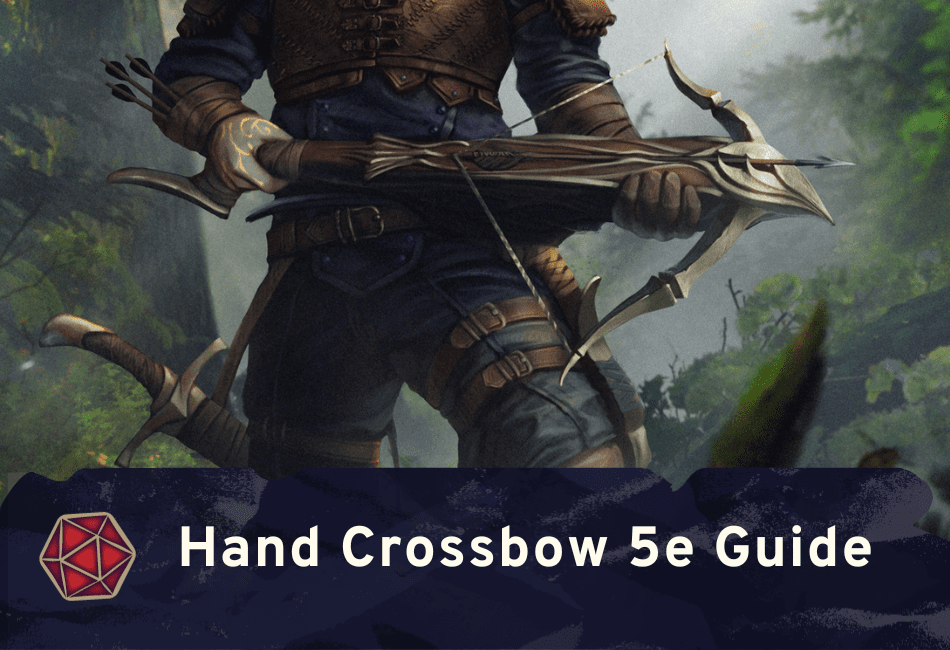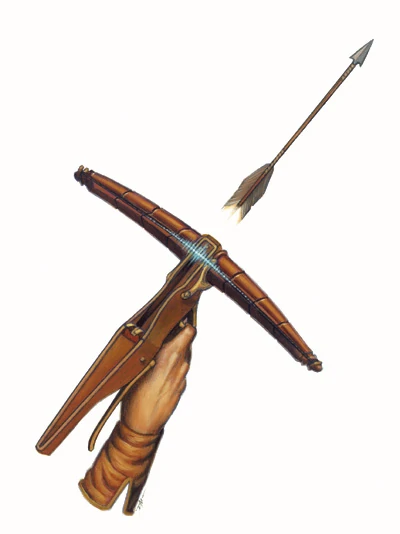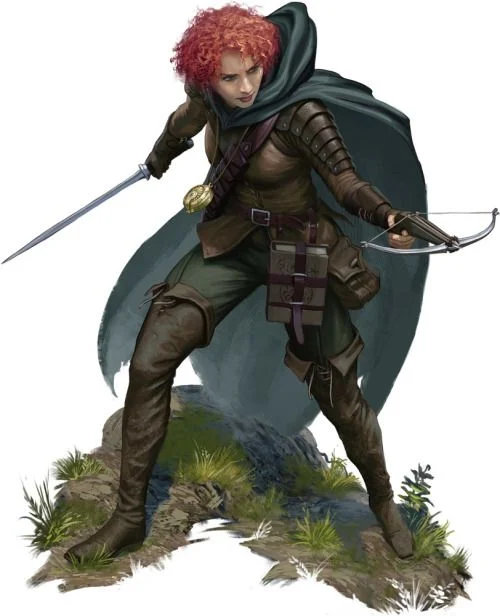As she sits in the tree, she steadies her hand, the hand crossbow aimed at a target a couple of dozen feet away. She can make them out between the leaves and boughs of the tree. A heavy crossbow would be too loud, too difficult to carry up; a bow too large or too unwieldy in this cramped position.
The hand crossbow was a perfect choice. Her gaze is unwavering as she watches, waiting for her prey to come into range. With a soft intake of breath, her thumb brushes over some runes carved into the handle, and they light up for a brief moment in acceptance, weaving magic into her bolt.
She releases that breath and pulls the trigger. Silently, the bolt zips through the air and finds a home in its target, the extra bit of radiant damage imbued in the bolt dealing just enough damage to take down her undead foe, and not a soul around is wiser. Welcome to a Hand Crossbow 5e Guide.
At a Glance
- Simple, Light, Martial Weapon
- Properties: Ranged, light, loading
- Range: 30/120
- Deals 1d6 piercing damage and uses your Dex modifier.
- Everyone but Wizard and Druids can use them unless the Weapons Specialization Feat is used or your character is also a Drow.
- Unless otherwise modified, it can only use bolts as ammunition.
- The only way to get expertise is with the Crossbow Expert Feat.
- There are a lot of magical homebrewed hand crossbows and not that many magical standard, base-game hand crossbows.
The Basics
The hand crossbow in D&D 5e is a ranged, martial weapon. It deals 1d6 Piercing damage and has the properties of Light, Loading, and Ranged. Its range is 30/120, and it has a carrying weight of 3.
For most games that I’ve played in or Dm’d for, the carrying weight doesn’t matter too much, but if you’re uncertain about your own games, don’t hesitate to bring it up to your Dungeon Master.
The Specifics
Although we’ve broadly defined what the hand crossbow is in Dungeons and Dragons 5e, there are a few specifics that can be confusing for both veteran players and newbies. Plus, there are a few ways you can get creative with this weapon outside of the traditional ‘trigger pull.’
What is the “Loading” Property?
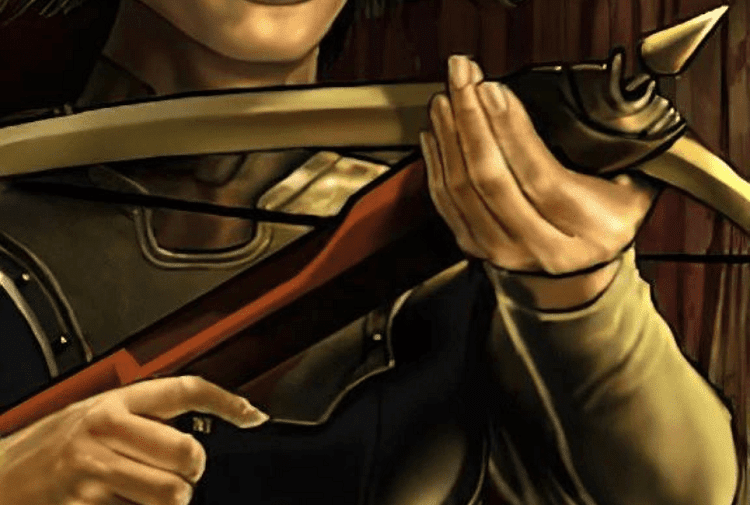
In Dungeons and Dragons 5e, if your weapon has the Loading property tagged onto it, it means that you cannot make extra attacks with it in the same turn.
If your character could make a bonus action attack or a second attack (like a 5th-level fighter), the Loading property keeps you from using that specific weapon for all of your attacks. There is a way to get around this – the Crossbow Expert feat, but that will be covered later on.
How Range Works
For those who are unfamiliar with ranged attack weapons, generally, they will give you the max range you can make an attack without disadvantage – in the case of the hand crossbow, this would be “30.”
The following number, “120,” is the longest range you can make an attack with while using the hand crossbow, but any attack made back the 30-foot range, while possible up to 120 feet, is done with a disadvantage.
Ranged attacks also have to be ranged. They cannot be within your melee attack range. For most players, this range will be 5 feet. If you’re trying to attack in this short range then it will be a disadvantage.
Getting Around the Ranged Demands
But what if your enemy is right in front of you, in touching range, and all you have is your hand crossbow? What if you don’t have the elusive Crossbow Expert feat I have yet to discuss? Well, the simple solution is to hit them with the crossbow. Don’t pull the trigger; just grip it with both hands and swing like you’re swinging a club.
Sure, it could run the risk of breaking your crossbow, but you don’t have much to lose besides your life and the 75 GP it will take to buy a new one.
If you take this move, you get to use it as an improvised weapon. This will depend on your DM for what stats it would have, but in the case of a hand crossbow, considering that it’s lightweight and small, I would have it roll 1d4 bludgeoning damage using your Dex stat instead of strength.
Ammunition
You can only use bolts with hand crossbows unless they have been outfitted for another type of ammunition. To save some funds, especially in the early game, you’ll want to scower the battlefield after each fight.
By doing so, you can recover half of the ammunition you used by searching through the battlefield. There is a chance your DM will make you roll an investigation check to find all your lost bolts, so “half” isn’t a guarantee. If you’re lucky, you’ll end up with more than you used, thanks to the enemies.
If you’re very, very unlucky, you may only end up walking away with the materials to make them, if anything at all.
Using Magic Bolts with Non-Magical Weapons
There aren’t that many magical bolts on the market in standard, non-homebrewed DnD, so your options are limited. Regardless, you don’t need to have a magical hand crossbow in order to use magical bolts.
If you do find magical bolts, remember that they only lose their magic upon hitting their target, unless otherwise stipulated in their description – so go out and find them again after the battle is over!
Proficiency
Simplified, proficiency generally just means that you are capable of doing something with relative ease. Considering that the hand crossbow is a simple weapon, it is more than likely that you’re already proficient with it.
A wide variety of classes are perfectly capable of using the hand crossbow, though none are able to obtain expertise in their crossbow unless they take a feat.
Class Proficiency
As previously mentioned, there is a whole slew of classes that are proficient with crossbows. The simpler a weapon, the more people can use them. In the hand crossbow list, we have Artificers, Barbarians, Bards, Clerics, Fighters, Monks, Paladins, Rangers, Rogues, and Warlocks.
Pretty much every single class on the list will have proficiency with simple weapons, and as such, they can have proficiency with a hand crossbow. Everyone except for the poor Druids and the squishy Wizards.
Race Proficiency
There is a single race that is proficient with hand crossbows, no matter what class you take. It’s my favorite, and it’s the race of the Dungeon and Dragon’s Poster Boy, Drizzt Do’Urden: the Drow.
Drow have an innate proficiency with hand crossbows that supersedes the proficiency of any class, though we will likely never see Drizzt touch a crossbow outside of the Legend of Drizzt books (and even then, he doesn’t do it for long).
However, even if you were to take a class with proficiency in hand crossbows, it wouldn’t give you expertise. Unfortunately, doubling up on proficiency doesn’t do much of anything without some homebrew rulings.
How to Gain Proficiency
So you’re one of the two classes that aren’t proficient in hand crossbows: Druid and Wizard. You still desperately want to use a hand crossbow, even if you have to do some weird workaround for it – after all, it’s for the aesthetic, the flair, the ability not to have to use up your spell slots all of the time.
The 5e Weapon Specialization feat is just what you need. This feat allows you to gain proficiency in any weapon of your choice, along with a +2 bonus to attack rolls you make with this weapon, prevents you from having a disadvantage with this weapon, and it makes your chosen weapon considered to be magical, even when it’s not.
Better than Proficient: Be an Expert
The only way to obtain expertise with crossbows is the Crossbow Expert feat. This feat allows the wielder to ignore the loading property of their weapon; have no disadvantage when firing upon an enemy within five feet; and, as an added bonus, when they attack with a one-handed weapon, they can also use their bonus action to attack with their hand crossbow.
If you’re using a hand crossbow, it falls into the category of a “one-handed weapon,” allowing for you to use it multiple times in a row – If you have an action, second action, and bonus action, you can use all three actions to shoot.
The Pros and Cons
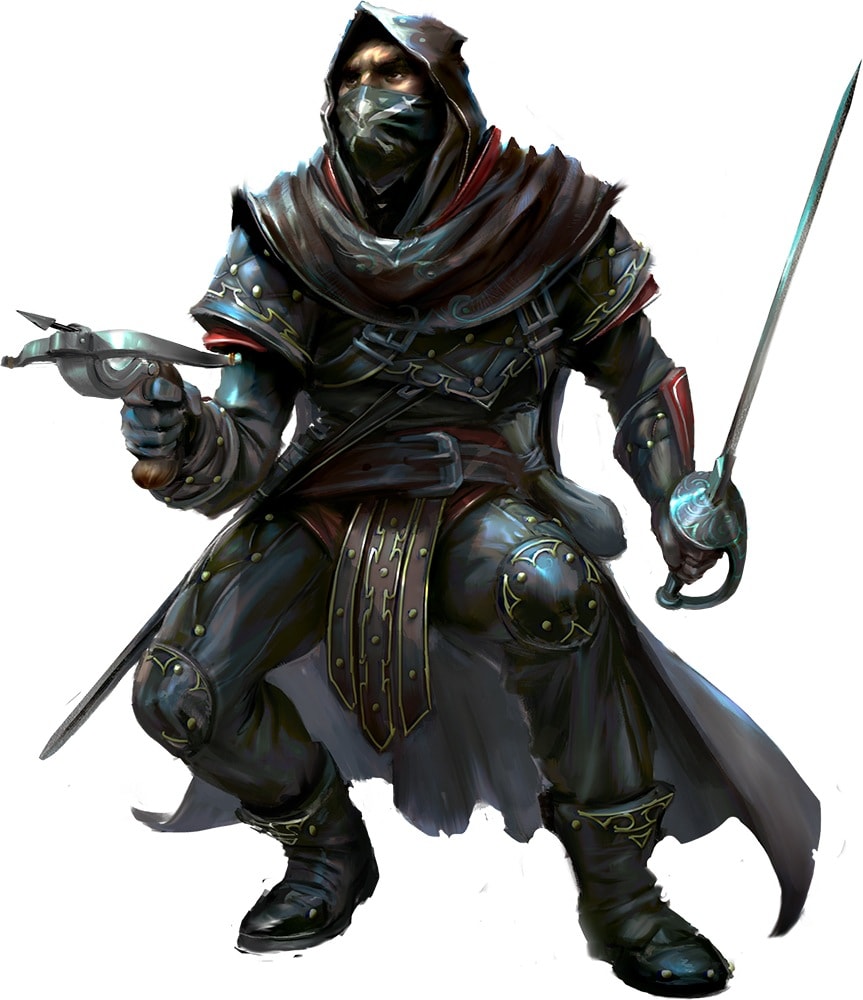
Like with everything in DnD 5e, there are some pros and some cons to using the hand crossbow – and in the case of this weapon, some reasons are very situational specific and thus can be both a pro and a con.
Why You Should Have One
- Lightweight
- Reloading is a free action
- Being Dex-based makes it the perfect weapon for most classes (especially Assassin Rogues).
- It’s like the precursor to a gun, and we all know that everyone (kind of) wants a gun in DnD.
- Technically it’s way more inconspicuous than the heavy crossbow.
Why it Kind of Secretly Sucks
- Without the Crossbow Expert feat, you need both hands to reload, even if it is a one-handed weapon.
- It is heavily dependent on the Crossbow Expert feat to be a great weapon
- There isn’t much magic ammunition available for hand crossbows
- Let’s be honest… the Shortbow is a better option in terms of range
- It is way less intimidating than the heavy crossbow.
Enchanted Options
This concept has come up a few times now, so we finally have to consider, what are the different types of hand crossbows? Beyond the standard +1, +2, and +3 enchantments, there is a whole world of enchanted and magical hand crossbows that have been made by homebrew content makers and the additional content for Dungeons and Dragons 5e.
Each one offers a unique experience that adds a little something extra to the game and some extra fun to your combat.
Vicious Hand Crossbow
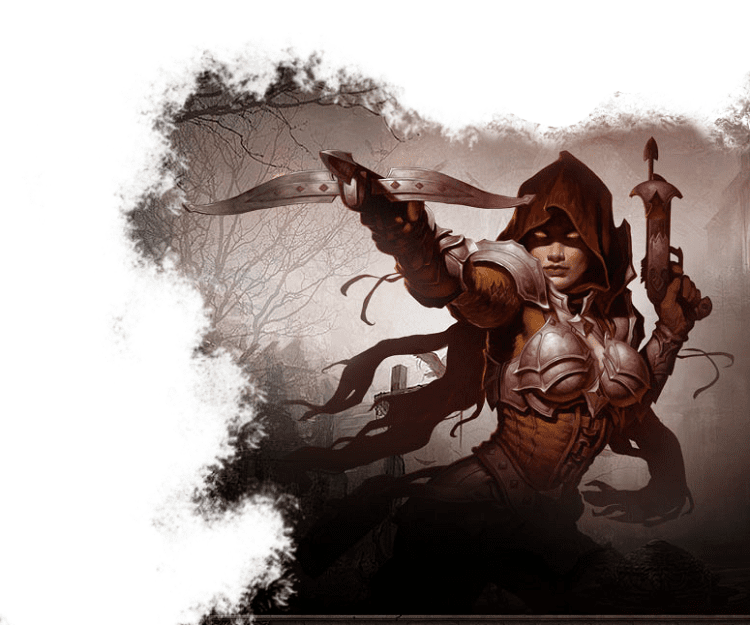
Found in the standard Player’s Handbook, the Vicious hand crossbow is not one that you have to search long and hard for. The main benefit of this hand crossbow is that whenever you roll a 20, be it natural or otherwise; your target will take an extra seven points of piercing damage or whatever other damage your arrow does.
The Tinkertop Boltblaster 1000
If you’re familiar with Critical Role’s the Mighty Nine, you’ll know and love the Tinkertop Bolt Blaster 1000. This crossbow is built off of a +1 crossbow, giving it a +1 to attack and damage rolls. As some additional treats, on a natural 20, the crossbow automatically reloads and fires a second bolt. If you roll a natural 20 for the second bolt, it doesn’t do it again.
However, this bolt does have a dangerous side – if you roll a natural 1, the Tinkertop Bolt Blaster 1000 misfires and pierces the user instead for 1d6 piercing damage, as the unfortunate Nott the Brave discovered.
Orner’s Venomous Crossbow
Designed by the Griffon’s Saddlebag, this hand crossbow is exceedingly special.
Similar to the Tinkertop Bolt Blaster 1000, it gives a +1 to attack and damage rolls made with it. However, this hand crossbow has four charges. One charge can be expended to coat your fired bolt with venom.
On a hit, the target has to make a DC 13 Con save and take 1d6 poison damage. On a failed save, the target is poisoned until their next turn.
If you expend the last charge in the crossbow, you have to roll a d20. On a natural one, the attached tubes and vessels shatter and spray poison in a large 25-foot sphere.
Creatures in that sphere have to roll a DC15 Con save and take 1d12 poison damage. On a failed save, they are poisoned for one minute. With that natural one, the crossbow loses all of its magical abilities.
Subtle Cricket
Designed by Dungeon Strugglers, this crossbow also gives you a +1 to attack and damage rolls. The Subtle Cricket has three charges, and you can expend one to three to empower your bolt. On a hit, for each charge you put into the bolt, your target will take an additional 1d12 force damage and be pushed five feet away.
When you fire a kinetically charged bolt, you have to save on a DC 10 Strength save, which goes up by two for every charge used over one, maxing out at 14. On a failed save, you are knocked prone. If you roll a natural 20, your target is pushed three times as far away and is knocked prone without a save.
FAQs
Question: Can You Duel-wield Hand Crossbows in 5e?
Answer: As cool as the idea is, no… unless your crossbow can auto-reload itself, in which case, yes. Otherwise, unfortunately, you’re going to need a hand free to load it yourself.
Question: Do Hand Crossbows Use Dexterity or Strength?
Answer: Hand crossbows are considered to be light weapons or light crossbows; as such, they would use dexterity. On the other hand, something like a heavy crossbow would use strength.
Question: Can I Make Multiple Attacks with a Crossbow in One Turn?
Answer: Traditionally, no, you can’t. That is unless you have the Crossbow expert feat.
This feat allows you to ignore the loading property on your crossbow and make multiple attacks with it in the same term – e.g., if you’re a fighter and have multiple attacks, congratulations, you can now attack with your heavy crossbow as many times as you want (so long as you’re proficient with them).
As an added bonus with this feat, you can ignore the ranged requirement and don’t make your attacks at a disadvantage when your enemy is within five feet of you.
Conclusion
Hand crossbows, at their core, are a simple item, but when you start to get into the world of homebrew and magic items, they can become something very joyful and cool. Magic and homebrew add a little extra fun to games, whether you’re a veteran or a new player.
There were a lot of games where I would recommend that people play the “vanilla” version first to get the full, original experience, but Dungeons and Dragons are not one of those games. The best part about it is a tabletop game, mainly played in the theater of the mind, is that you can customize it to your taste.
I only briefly touched on some of the enchanted hand crossbows available to the public for use, and that’s only talking about the pre-made stuff. There’s so much you could create on your own or with your table – don’t let the borders of what has already been done stop you from exploring what could be done.
- Hand Crossbow 5e Guide – For Everyone but Druids and Wizards - December 16, 2022
- Compelled Duel 5e Guide - November 14, 2022
- Heavily Obscured 5e Guide – The Ins And Outs Of The Dark - October 31, 2022

